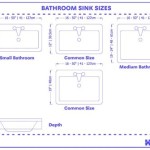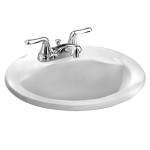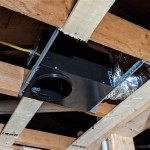My Bathroom Faucet Is Leaking From The Handle
A dripping bathroom faucet handle can be a persistent source of annoyance and wasted water. Ignoring the problem can lead to higher water bills and potential damage to the faucet and surrounding areas. Fortunately, fixing a leaky handle is often a manageable DIY project that doesn't require extensive plumbing experience. Understanding the common causes and solutions empowers homeowners to address the issue effectively.
Common Causes of Leaky Faucet Handles
Several factors can contribute to a leaking faucet handle. Identifying the root cause is crucial for selecting the appropriate repair strategy.
- Worn-out O-rings: O-rings create a watertight seal around the handle stem and cartridge. Over time, these rubber rings can deteriorate, crack, or become dislodged, leading to leaks.
- Corroded Cartridge: The cartridge controls the flow and temperature of the water. Corrosion can disrupt its functionality, causing leaks around the handle.
- Loose Packing Nut: The packing nut secures the handle stem and prevents water from leaking around the base. If the packing nut is loose, it can compromise the seal.
- Damaged Valve Seat: The valve seat is the point of contact between the cartridge and the faucet body. A damaged or worn valve seat can prevent a proper seal, resulting in leaks.
- Mineral Buildup: Hard water can leave mineral deposits around the cartridge and other internal components, interfering with their proper operation and potentially causing leaks.
Tools and Materials for Repair
Gathering the necessary tools and materials beforehand streamlines the repair process. Having everything at hand avoids interruptions and ensures a smoother workflow.
- Screwdrivers (Phillips and flathead): For removing handles and accessing internal components.
- Adjustable wrench: For loosening and tightening packing nuts and supply lines.
- Slip-joint pliers: Helpful for gripping and turning various faucet parts.
- Basin wrench: Essential for reaching difficult-to-access nuts under the sink.
- Replacement O-rings, cartridge, and packing nut (if necessary): Ensure the replacements match the faucet model.
- Plumber's grease: Lubricates O-rings and other moving parts, extending their lifespan.
- Old towels or rags: To protect the sink surface and absorb any spilled water.
- Penetrating oil (optional): Can help loosen corroded or stubborn parts.
Step-by-Step Repair Guide
Following a systematic approach ensures a successful repair. Before starting, always turn off the water supply to the faucet using the shut-off valves located under the sink.
- Remove the Handle: Use a screwdriver to remove the screw(s) holding the handle in place. Carefully pull the handle off.
- Inspect the Handle Assembly: Examine the O-rings, packing nut, and handle stem for signs of wear or damage.
- Remove the Cartridge (if necessary): Use an appropriate tool to remove the retaining clip or nut holding the cartridge. Carefully pull the cartridge out.
- Replace Worn Parts: Install new O-rings, packing nut, or cartridge as needed. Apply plumber's grease to the O-rings before installation.
- Reassemble the Faucet: Reinstall the cartridge, handle stem, packing nut, and handle, tightening everything securely.
- Turn on the Water Supply: Slowly turn the water supply back on and check for leaks.
Troubleshooting Persistent Leaks
If the leak persists after attempting the basic repairs, further investigation may be necessary.
- Check for a Damaged Valve Seat: A damaged valve seat requires specialized tools to repair or replace.
- Inspect the Supply Lines: Loose or damaged supply lines can also cause leaks. Tighten or replace them as needed.
- Consider Professional Help: If the problem remains unresolved, contacting a qualified plumber is advisable.
Preventive Maintenance
Regular maintenance can prevent future leaks and extend the life of the faucet.
- Periodically inspect the faucet for any signs of leaks or wear.
- Avoid using excessive force when operating the handle.
- Clean the faucet regularly to prevent mineral buildup.
Choosing Replacement Parts
Selecting the correct replacement parts is essential for a successful repair. Using incompatible parts can lead to further problems.
- Identify the Faucet Model: Locate the manufacturer's name and model number, usually found on the underside of the faucet or in the original documentation.
- Purchase Parts from a Reputable Supplier: Ensure the replacement parts are genuine and compatible with the faucet model.
Water Conservation
Addressing a leaky faucet promptly not only saves money but also conserves water.
- Calculate Water Loss: Even a small drip can waste a significant amount of water over time.
- Environmental Impact: Water conservation is crucial for protecting natural resources.
Safety Precautions
Taking proper safety precautions is paramount when working with plumbing fixtures.
- Turn Off the Water Supply: Always turn off the water supply before starting any repairs.
- Wear Protective Gear: Consider wearing safety glasses and gloves to protect against potential hazards.

How To Fix A Leaky Faucet Handle 12 Steps With Pictures

How To Fix A Leaky Single Handle Sink Faucet

How To Fix A Leaking Bathtub Faucet Diy Family Handyman

How To Fix A Leaky Faucet Handle 12 Steps With Pictures

Simple Ways To Fix A Leaky Delta Bathroom Sink Faucet

How To Fix A Leaking Bathtub Faucet Diy Family Handyman

How To Fix A Leaking Bathtub Faucet The Home Depot

Faucet Repair How To A Leaky Shower

Bathroom Faucet Is Leaking Or Dripping

5 Reasons Your Faucet Is Dripping Water How To Fix It







